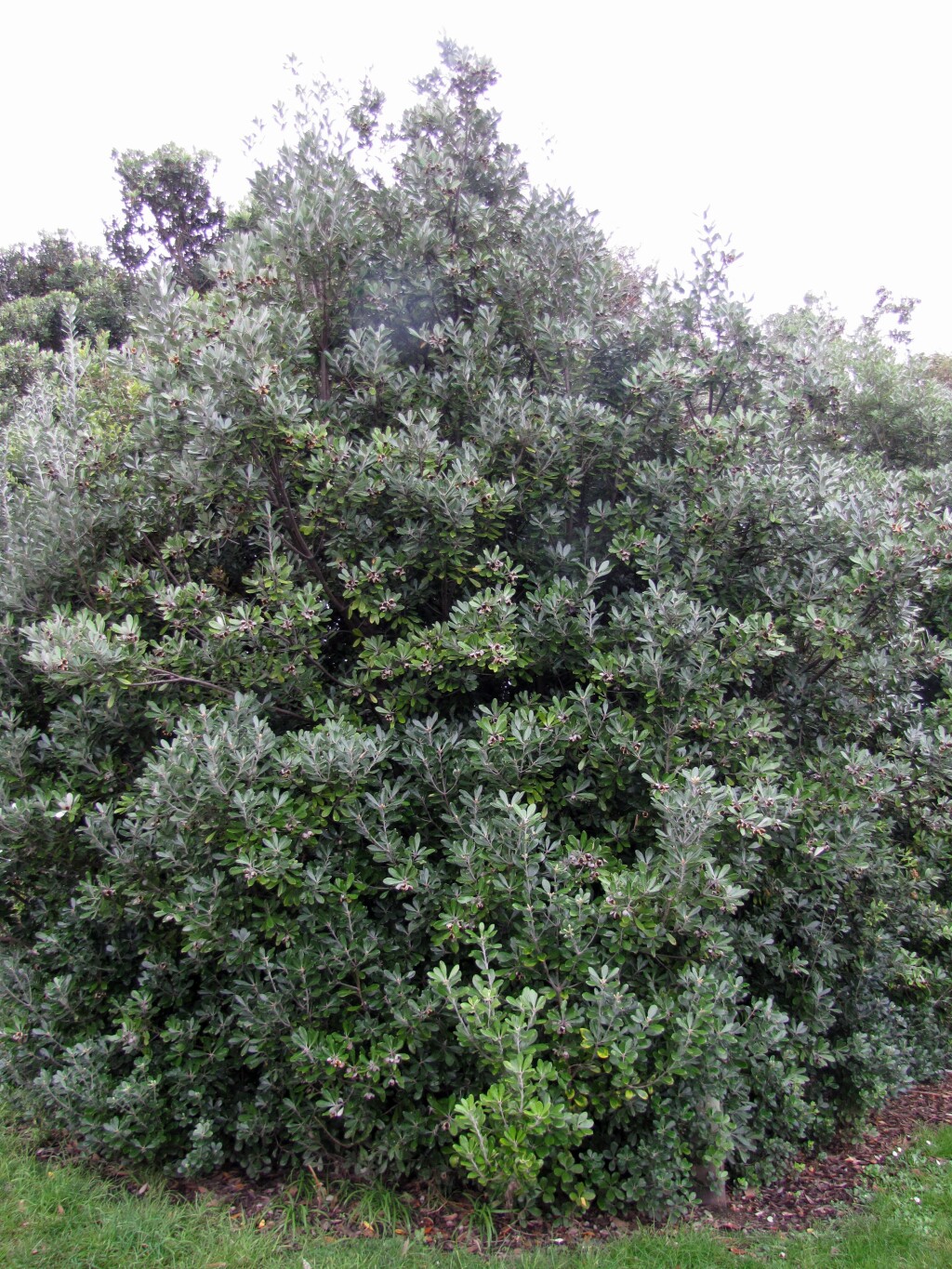Pittosporum crassifolium
Banks & Sol. ex A.Cunn. KaroShrub or tree to c. 9 m high; branchlets densely white-tomentose. Leaves obovate to oblanceolate, 4–8 cm long, 1.5–2.5 cm wide, thick-textured, upper surface finally glabrous, lower surface densely white-tomentose; margins recurved to revolute. Flowers unisexual, in terminal umbels of 5–10 (males) or 1–3 (females); pedicels erect to spreading, 1–3 cm long; sepals free, narrowly ovate to lanceolate, 5–9 mm long, white-tomentose, erect; petals oblong, 9–12 mm long, deep maroon, thick-textured, recurved or reflexed toward apex. Capsule subglobose, c. 15–25 mm long, densely greyish-tomentose, inner face pale, wrinkled; fruiting pedicel thick, usually recurved, to c. 2 cm long; seeds numerous, 3–5 mm long, blackish. Flowers Aug.–Oct.
VVP, GipP, OtP, WaP, OtR, Strz. Also SA, NSW, Tas. Native to northern parts of the North Island of New Zealand, naturalised in southern parts of that and the South Island. Also naturalised on Norfolk Island and Hawaii. Noted as naturalised in coastal Leptospermum laevigatum scrub at a few sites around Port Phillip Bay, as well as in wet heathland at Port Campbell, and in Eucalyptus obliqua and E. radiata forest at Buffalo, in southwest Gippsland. Commonly grown as an ornamental, particularly in coastal areas.
Walsh, N.G.; Albrecht, D.E. (1996). Pittosporaceae. In: Walsh, N.G.; Entwisle, T.J., Flora of Victoria Vol. 3, Dicotyledons Winteraceae to Myrtaceae, pp. 526–539. Inkata Press, Melbourne.
 Spinning
Spinning



